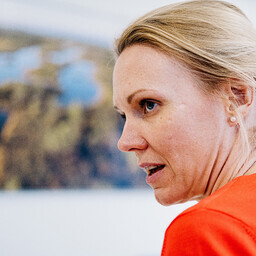Estonia fails to meet the agreed climate targets in forestry and land use for 2021-2025 within the European Union. As a result, Estonia must purchase emission units worth at least tens of millions of euros by 2028. The state has not yet accounted for this cost, as it is difficult to predict. It is hoped that the rules may change.
Each country must accurately account for greenhouse gas emissions. Final figures will be available later. Currently, it is estimated that by 2027, we will have a clear picture of the 2025 emissions. European countries are concerned that the current methodology does not account for all natural changes. For example, natural disturbances caused by heatwaves, floods, and pests have become more frequent recently.
Several countries wish to discuss changing the rules with the European Commission. No new agreement has been reached yet. Climate Minister Yoko Alender said a year ago that the cost to the state could be 24–48 million euros. The state has not accounted for this cost, as negotiations are still ongoing. In addition to climate change, the war in Ukraine also affects the situation.
Before it is clear how to account for various elements, the deficit cannot be predicted. The situation may become clearer within the next year. If the rules are not changed, the cost in 2028 could be significant. The deficit in forestry and land use, in addition to the transport sector, may increase costs.
If the rules do not change, the cost forecast will not change either. According to the Ministry of Climate, the cost could be 24–48 million euros. However, Finland estimates that the unit price could be much higher. If Estonia uses the same price, the cost could be 70–170 million euros. The state should consider the worst-case scenario.
Different countries assess the unit price very differently. The focus should be on investments that are beneficial to the environment. The EU's goal is not to penalize countries but to protect the environment and support the economy. The Commission seeks to find solutions to bring about changes.
The Commission cannot change the rules; only the countries together can do so. Some countries may receive a lot of money for meeting climate targets. These countries may be very interested in the current rules. Germany has a surplus in the forestry and land use sector. Most countries, however, are grappling with how to account for changes in land use.
In the EU, climate targets are agreed upon in ten-year stages. Now, the question is specifically how to meet these targets. Forestry and land use will be key areas for solving climate problems in the future. The Commission seeks to find solutions that are more carrot than stick. There is significant room for negotiation regarding methodology and rules.
There is a theoretical possibility that next year it will become clear that the negotiations have not led anywhere and the deficit is much larger. Currently, the situation is still unclear, but there is great confidence that various impacts will begin to be adequately accounted for.

